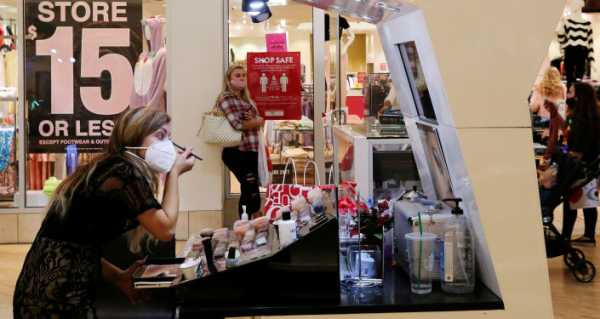
The study cited a survey of over 300,000 people in the United States in local communities, which found a 10 percent increase in mask-wearing reduced the rate of transmission by three times compared with communities not wearing masks.
Wearing masks helps to control the spread of COVID-19, a study published in The Lancet Digital Health journals found on Tuesday.
Citing figures on instantaneous reproductive number (Rt), a measurement of the growth rate of COVID-19, researchers monitored rates from 3 June to 27 July last year.
12 states mandating residents to wear masks did not see additional rate increases, the survey found.
The findings reportedly boosted support for community mask-wearing programmes to block transmission of the disease, it said.
Professor John Brownstein of Boston Children’s Hospital, said governments had mandated mask-wearing to block the transmission of COVID-19, but past studies on efficacy were “mixed” and randomised controlled trials were “challenging”.
But the new study included mathematical modelling to map self-reported mask-wearing, social distancing and COVID-19 transmission across the US.
Mask wearing was “not a replacement” for social distancing measures, and US states imposing them at “high levels” were more likely to control the pandemic, study co-author Ben Rader of Boston Children’s Hospital and Boston University, said.
COVID-19 Transmission Rates, Data Revealed in Fresh Research
Data from the Rt.live database was combined with the COVID Tracking Project and numerous COVID-19 working groups, the study said, adding contact tracing and diagnostic testing was not included in findings.
A further web survey of 378,207 people found 84.6 percent would ‘very likely’ wear masks at the grocery store, 40.2 percent wore masks when visiting family and friends, and 4.7 percent said they were ‘not likely to wear a mask at all’, it found.
Those aged 65 and up reported the most in the mask-wearing study, at 48 percent, and Black, Hispanic and other non-Caucasian groups found high self-reporting rates at 62 percent, 57 percent and 49 percent, respectively.
Larger urban areas, coastal regions and states near the southern US border reported the highest proportion of reported mask-wearing, it added.
The study comes after US president-elect Joe Biden announced in December his transition team would mandate mask wearing on federal properties and interstate travel in his 100 Day Masking Challenge.
Sourse: sputniknews.com






